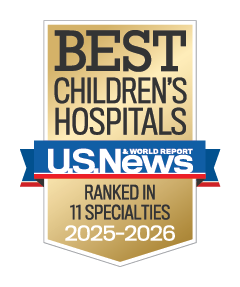

Bone marrow transplantation (BMT), a longtime standard of care for leukemia and other malignancies, has found applications beyond the oncology setting. BMT can be an effective treatment option for patients with inherited metabolic disorders. Currently, UCSF Benioff Children’s Hospitals are among three sites in the United States and seventh in the world engaged in research on a novel gene therapy for Hurler syndrome, the most common inherited metabolic disorder treated with BMT.1
“Hurler syndrome presents with significant multisystem comorbidities, and it’s incumbent upon us to provide novel treatment options to those affected,” said pediatric hematologist-oncologist Sandhya Kharbanda, MD, professor of pediatrics and medical director of the BMT program at UCSF Benioff Children’s Hospitals. “Engaging in this research opens the door to new therapies that may benefit more patients and also may be more beneficial than a standard transplant.”
Shortcomings of current therapies
The landscape of Hurler syndrome treatment is relatively sparse, with only two therapies commonly provided on a regular basis. Unfortunately, both have shortcomings that limit their effectiveness.
- Enzyme therapy. The underlying cause of Hurler syndrome (also known as mucopolysaccharidosis type I) is a lack of the lysosomal enzyme that breaks down glycosaminoglycans (GAGs), such as dermatan sulfate and heparan sulfate.2 While enzyme therapy helps break down GAGs,3 it does not breach the patient’s central nervous system. As a result, this treatment cannot address brain function, leaving infants at risk for neurocognitive decline, which leads to intellectual disability.4
- Transplantation. As the accepted standard of care for severe Hurler syndrome, BMT is often the first-line treatment. Transplant is an effective means of preventing neurocognitive decline, as it produces the lacking enzymes necessary for brain development. BMT is not, however, effective in halting other manifestations, which may include skeletal, ocular and cardiac issues. Because of this limitation, transplant patients often require subsequent surgeries to address issues affecting the spine, hips and certain organs. Furthermore, though BMT can effectively stop Hurler syndrome progression by replacing unhealthy white blood cells with healthy enzyme-producing white blood cells, achieving this positive result requires a well-matched donor. Locating such a donor can prolong time to treatment, allowing the disease to progress unchecked and decreasing the overall benefit of transplant. 1
Addressing these shortcomings through novel solutions represents the next frontier of Hurler syndrome care.
Gene therapy offers new hope
Today, gene therapy is at the forefront of Hurler syndrome research efforts as this treatment has potential to work around various obstacles.
Gene therapy may have significant advantages over standard BMT. One difference, said Kharbanda, is that gene therapy negates the need for an outside donor. With gene therapy, patients serve as donors for themselves, supplying the needed stem cells, which are then gene-corrected in the laboratory before being re-infused into patients. This saves time and resources, as there is no need to look for a donor. Additionally, it eliminates some serious risks of transplant that are associated with standard BMT, particularly with the use of a mismatched donor.
Though this gene therapy research is in early stages, an eight-patient pilot study in Italy demonstrated promising clinical outcomes that seem superior to standard-of-care BMT. Kharbanda anticipates the larger trial underway at UCSF Benioff Children’s Hospitals will solidify those results.
“Based on the preliminary data, this will likely be a major step forward for these patients,” she said, adding that she hopes it will spare patients with Hurler syndrome from long-term manifestations affecting the heart, skeleton and eyes.
Newborn screening is the new norm
Newborn screening, adopted by California and other states, has been a major step leading to early diagnosis of Hurler syndrome. Early diagnosis allows patients to receive BMT before the disease can advance and affect brain development and other organs and bodily systems.
Follow-up care
After transplant, patients need long-term follow-up to detect any side effects of chemotherapy or transplantation as well as to monitor for disease manifestations.
“The goal is to ensure young patients not only survive the transplant process,” Kharbanda said, “but also have a long lifespan with maximum function, reach important childhood milestones, develop a normal IQ and enjoy a high quality of life.”
Refer a patient online or call the Pediatric Access Center at (877) 822-4453 (877-UC-CHILD).
___________________________________________________________________
1 Interview with Dr. Kharbanda
2 https://pearltrial.ucsf.edu/MPS1-fetal-treatment
3 https://emedicine.medscape.com/article/1599374-medication and https://newbornscreening.hrsa.gov/conditions/mucopolysaccharidosis-type-ii
4https://www.sciencedirect.com/science/article/pii/S1098360021041083#:~:text=Enzyme%20replacement%20therapy%20can%20significantly,term%20treatment%20in%20Hurler%20children and https://rarediseases.info.nih.gov/diseases/12559/hurler-syndrome



